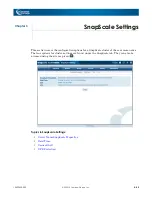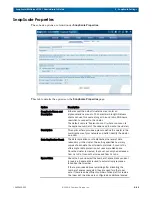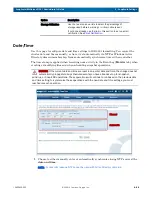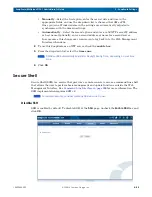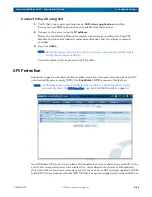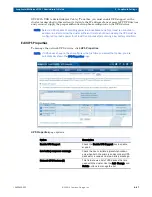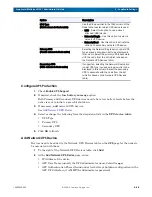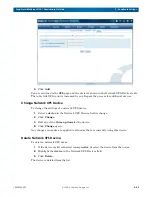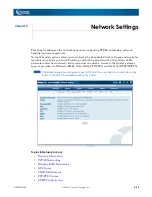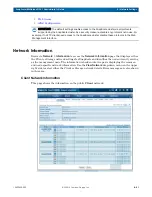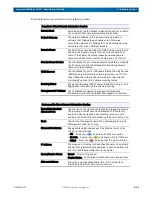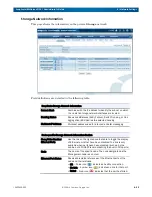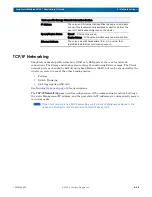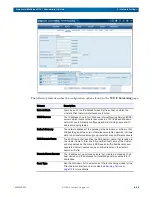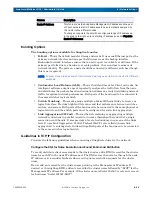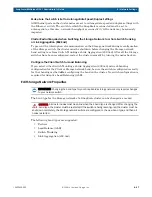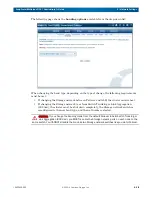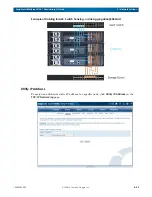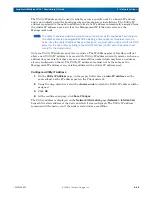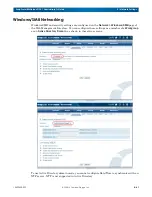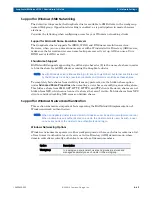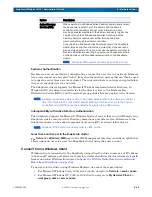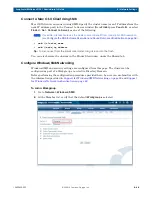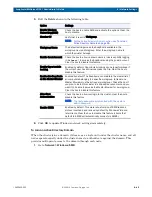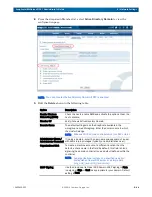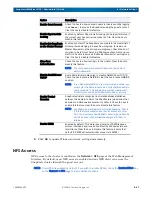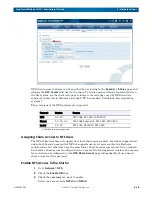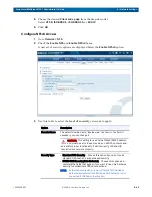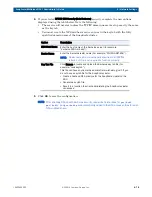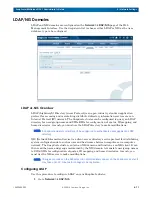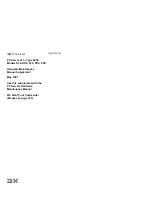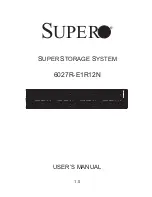
10400455-002
©2008-14 Overland Storage, Inc.
56
SnapScale/RAINcloudOS 4.1 Administrator’s Guide
4 – Network Settings
Bonding Options
The bonding options available for SnapScale nodes:
•
Failover
– This is the default mode for Storage networks. It uses one Ethernet port as the
primary network interface and one port held in reserve as the backup interface.
Redundant network interfaces ensure that an active port is available at all times. If the
primary port fails due to a hardware or cable problem, the second port assumes its
network identity. The ports on a node should be connected to different switches (though
this is not required).
NOTE: Failover mode provides switch fault tolerance, as long as ports are connected to different
switches.
•
(Automatic) Load Balance (ALB)
– This is the default mode for Client networks. An
intelligent software adaptive agent repeatedly analyzes the traffic flow from the node
and distributes the packets based on destination addresses, evenly distributing network
traffic for optimal network performance. Both ports of the bond need to be connected to
the same switch or logical switch.
•
Switch Trunking
– This mode groups multiple physical Ethernet links to create one
logical interface. Provides high fault tolerance and fast performance between switches,
routers, and servers. Both ports of the bond need to be connected to the same physical or
logical switch, and the switch ports must be configured for static link aggregation.
•
Link Aggregation (802.3ad)
– This method of combining or aggregating multiple
network connections in parallel is used to increase throughput beyond what a single
connection could handle. It also provides a level of redundancy in case one of the links
fails. It uses Link Aggregation Control Protocol (LACP), also called dynamic link
aggregation, to autonegotiate trunk settings. Both ports of the bond need to be connected
to the same switch or logical switch.
Guidelines in TCP/IP Configuration
Consider the following guidelines when connecting a SnapScale cluster to the network.
Configure the DNS for Name Resolution and Round Robin Load Distribution
To evenly distribute client access loads to the cluster nodes, add a DNS A record for the cluster
name for each IP in the node IP address pool. The DNS server then rotates through the node
IP addresses in a round-robin basis when serving name resolution requests for the cluster
name.
Do not add an A record for the cluster name pointing to the Management IP address. If
desired, or if using Snap EDR, add an A record for the cluster name followed by “-MGT” for the
Management IP address. For example, if the cluster name is Scale1234567, create an A record
for hostname “Scale1234567-MGT.”
Static IP Address
This table shows the SnapScale Management IP address and the pool
of Client network static IP addresses to be automatically assigned by
the cluster to the different nodes.
To change or populate the list with a contiguous range of IP addresses,
in the area to the right, enter a starting IP address and click Populate
Static IP Addresses.
Column
Description

